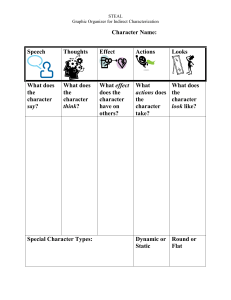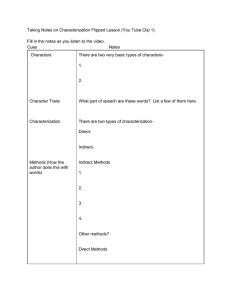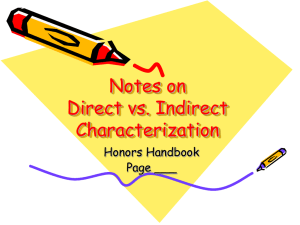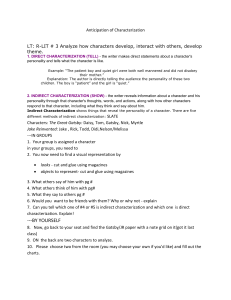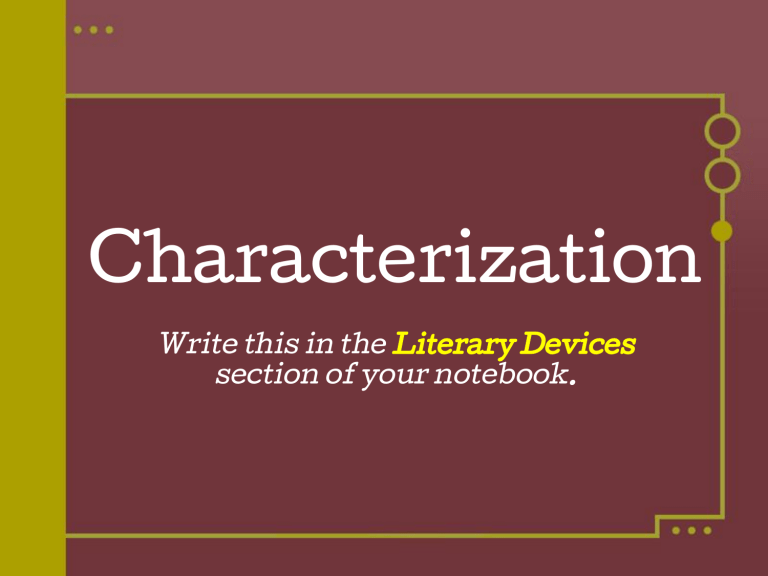
Characterization Write this in the Literary Devices section of your notebook. Definitions Characterization is HOW author shows the personality of the characters. Direct Characterization Direct characterization is when the author TELLS the audience what the personality of the character is. Ex: Sherlock Holmes is very clever and resourceful. EX: Dracula is an evil vampire. Indirect Characterization Indirect characterization is when the author SHOWS things that reveal the personality of the character. There are FIVE different methods of indirect characterization: speech, thoughts, effect on other characters, actions, and looks. (STEAL) Indirect Characterization Speech- What does the character say? How does the character speak? Example: “Hey, we can have lots of fun at camp this summer! I love being outside!” **This shows us the character is upbeat and happy. Indirect Characterization Thoughts- What is revealed through the character’s thoughts and feelings? Example: I wish it would stop raining. I am tired of sitting inside! **This shows us the character is active and likes being outdoors. Indirect Characterization Effect on Others- What is revealed through the character’s effect on other people? How do other characters feel or behave in reaction to the character? Example: The boy glared at his sister as she ate his dessert. This shows us that the character’s sister is selfish and does not think of others’ feelings. Indirect Characterization Actions- What does the character do? How does the character behave? Example: The girl roller skated through the house and into the garage. This shows us the girl is not concerned with rules or safety. Indirect Characterization Looks- What does the character look like? How does the character dress? Example: The guy left the game with slumped shoulders and a frown on his face. This shows us he is upset about losing. STEAL The Difference Remember, the difference between direct characterization and indirect characterization is TELLING v. SHOWING!
